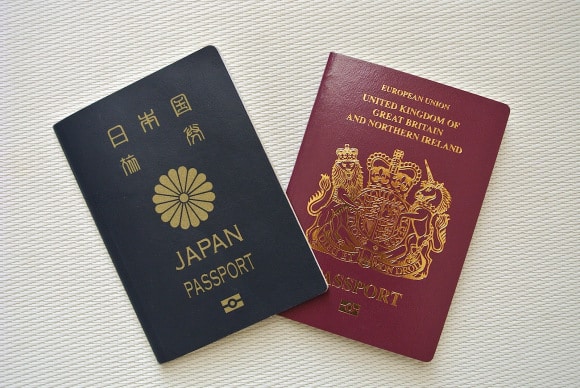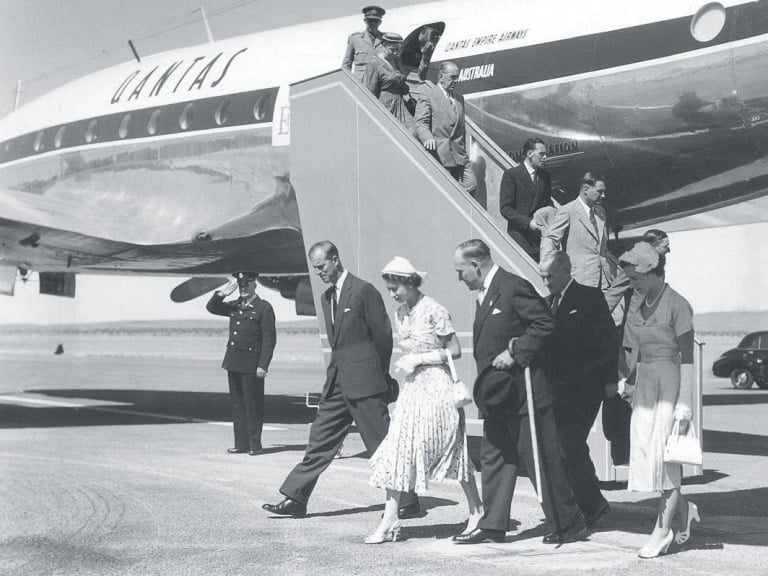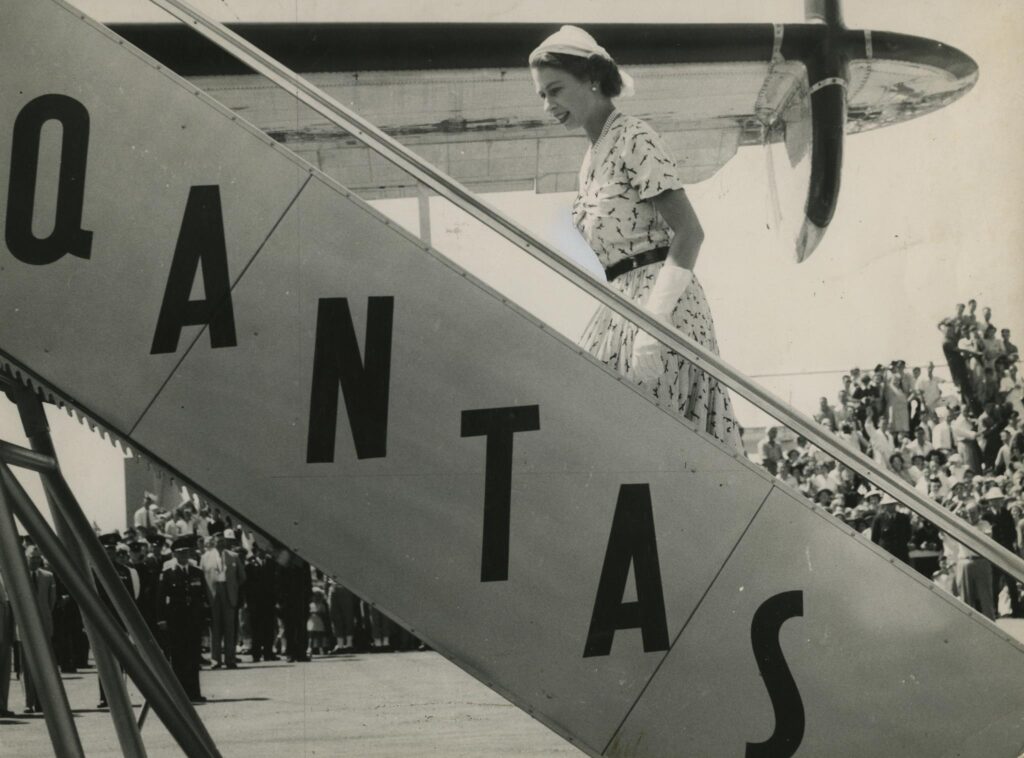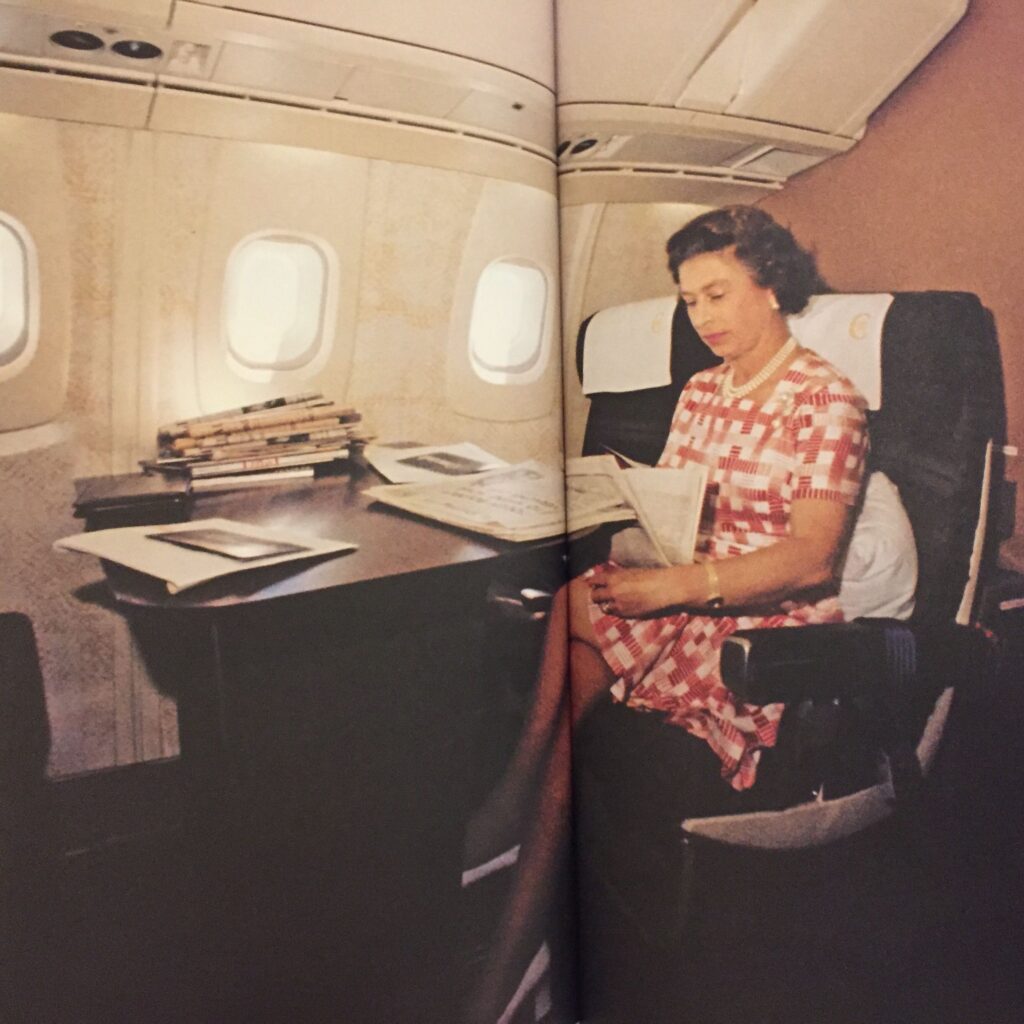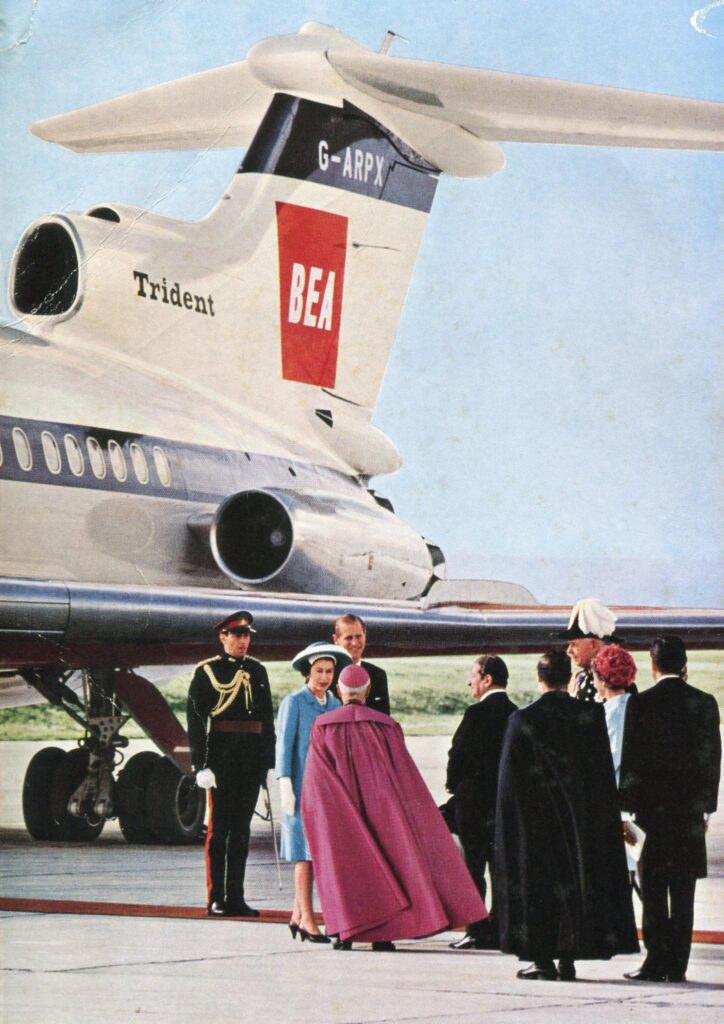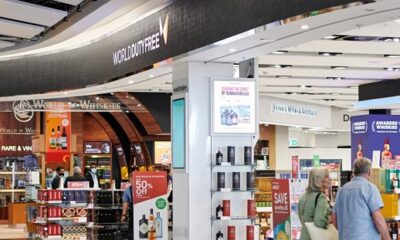Aviation
The Life of Queen Elizabeth Include Several Aviation Milestones
Here are a few of the Aviation adventures of Queen Elizabeth II that are always the most unforgettable for aviation enthusiasts all over the world.
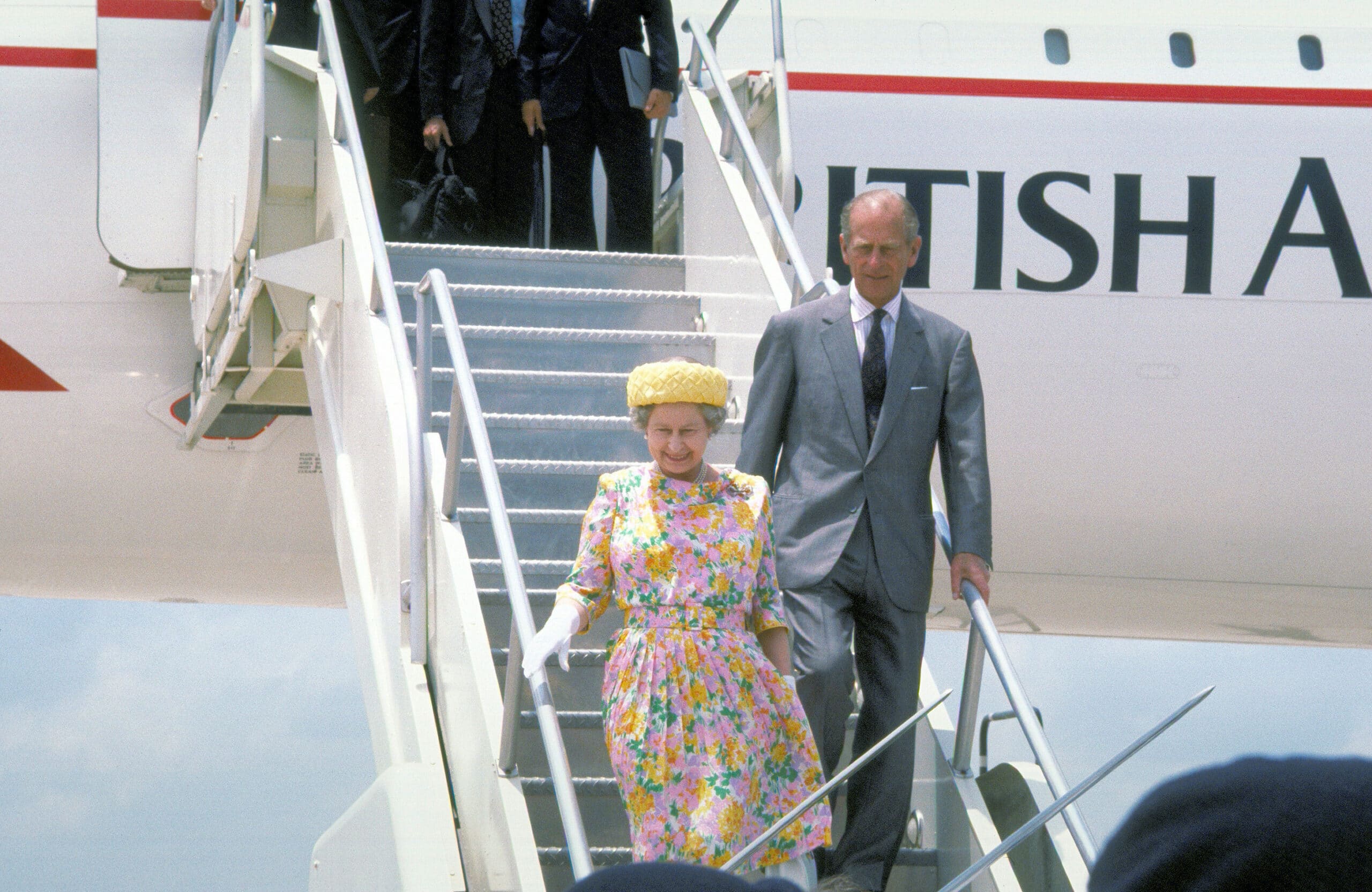
The longest-reigning monarch in British history, Queen Elizabeth II, passed away at the age of 96, leaving behind a legacy that used the media to bridge the gap between the old and the new.
Here are a few of the Aviation adventures of Queen Elizabeth II that are always the most unforgettable for aviation enthusiasts all over the world.
1. The Queen does not need a British passport to travel abroad.
The Queen does not need to own a British passport since they are issued in Her Majesty’s name. The Prince of Wales and The Duke of Edinburgh are two further members of the Royal Family who all possess passports.
The first page of British passports contains a representation of the Royal Arms, together with the following wording: ‘Her Britannic Majesty’s Secretary of State requests and requires in the name of Her Majesty all those whom it may concern to allow the bearer to pass freely without let or hindrance and to afford the bearer such assistance and protection as may be necessary.’
2. In 1954, Her Majesty Queen Elizabeth II was a guest on a Qantas flight.
3. When ‘Her Majesty Queen Elizabeth II visited India
India was visited by Queen Elizabeth three times: in 1961, 1983, and 1997. The most talked-about of her visits was her first one, which took place eight years after her coronation and after nearly 15 years of India’s independence.
President Rajendra Prasad welcomes Queen Elizabeth II of England and her husband Prince Philip, the Duke of Edinburgh, upon their arrival at Delhi’s Palam Airport in January 1961 for a royal trip to India. Source
The Queen visits New Delhi, in 1983
4. How Do the Royals of the United Kingdom Fly?
Strict confidentiality restrictions apply to the crews who have flown with The Queen, however, it is known that the aircraft are modified for The Queen’s usage.
She also rented out military or governmental aircraft, such as the Royal Air Force’s specially modified Airbus A330. The British Prime Minister and other high government officials frequently fly on the aircraft, which has comfortable-looking staggered business class seats with direct aisle access.
She previously chartered Concorde as well as a British Airways Boeing 777 for her trip to Australia for an 11-day visit with the Duke of Edinburgh. Source
QANTAS’ NEW YORK TO SYDNEY NON-STOP RESEARCH FLIGHT SET FOR TAKE-OFF(Opens in a new browser tab)
5. HRH Queen Elizabeth 2 flew a Concorde for the first time in 1977.
Following the Silver Jubilee tour, on November 2, 1977, the Queen took a Concorde flight for the first time from Barbados to Heathrow, as shown in the image below.
There was a 3-hour, 42-minute flight. In February 1979, the Queen travelled extensively throughout the Middle East on Concorde.
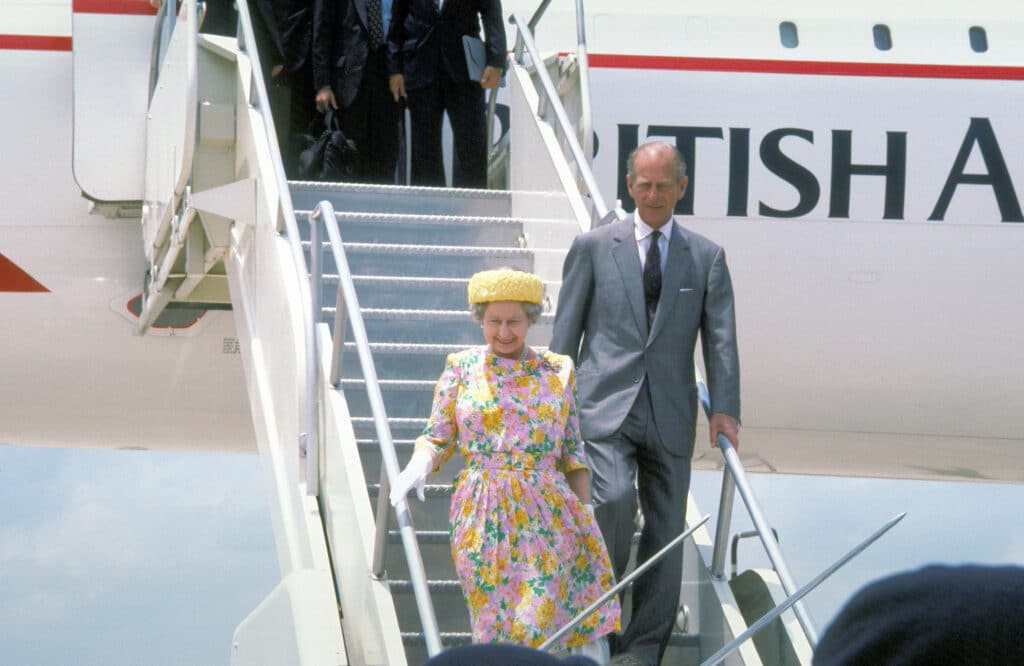
England’s Queen Elizabeth II and her husband, Prince Philip, Duke of Edinburgh, disembark from a British Airways Concorde supersonic transport aircraft upon their arrival for a royal visit.

Her Majesty The Queen, Concorde G-BOAE, Barbados – London Heathrow, 2 November 1977 (Image Credit: British Airways)
6. The Queen frequently took Qantas flights on her official visits to Australia.

Courtesy: Qantas
The Queen defied convention once more in 1995 when she travelled to New Zealand on an ordinary commercial airline for an official 10-day tour. She took the Boeing 747-400, Air New Zealand’s own Queen, on NZ1, the company’s flagship flight from London to Auckland via Los Angeles.
7. Aircraft models that the Royal Family have travelled
8. The Queen’s Terminal
Openings of airport terminals. In addition, the Central Terminal Area at London Heathrow, Terminal 1, Terminal 5, and the North Terminal at Gatwick were all formally inaugurated by the Queen in 1955, 1969, and 2008.
Heathrow Terminal 2 is an airport terminal of Heathrow Airport, the primary airport servicing London, United Kingdom. It is commonly referred to as The Queen’s Terminal. Source
#QueenElizabeth #Royalfamily
A statement from His Majesty The King: pic.twitter.com/AnBiyZCher— The Royal Family (@RoyalFamily) September 8, 2022

Airlines
US DOT says Airlines must now pay automatic refunds for cancelled flights
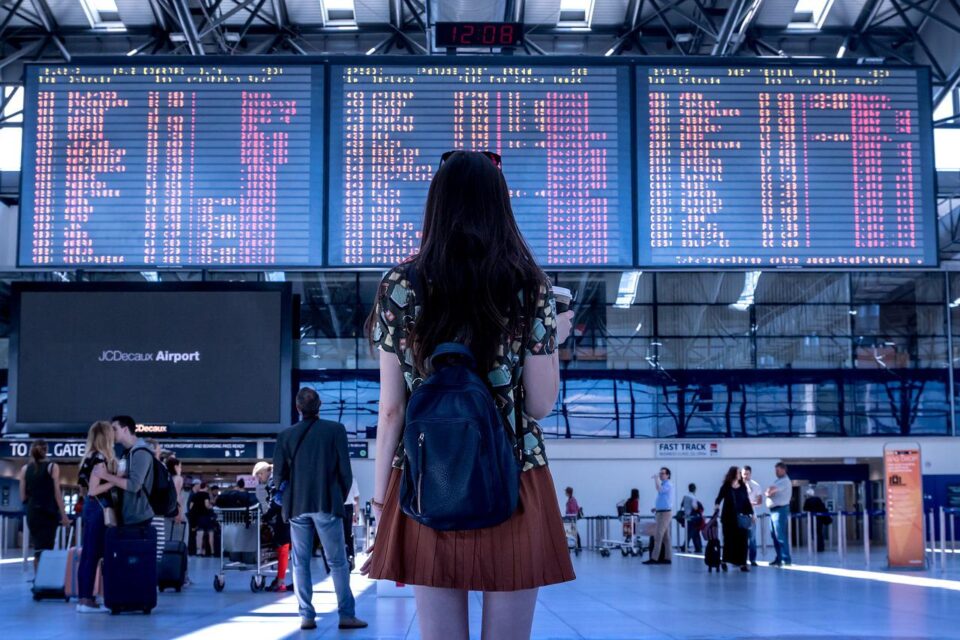
The U.S. Department of Transportation (DOT) has released a final regulation requiring airlines to quickly reimburse passengers with automatic cash refunds when owed, according to a statement made by the Biden-Harris Administration.
Under the new regulation, passengers will find it easier to get refunds when airlines dramatically alter or cancel flights, cause severe delays for checked baggage, or don’t supply the additional services they paid for.
According to a statement from the Biden-Harris Administration, the U.S. Department of Transportation (DOT) has published a final rule mandating airlines to promptly compensate customers with automatic cash refunds when they are eligible. The new rule would make it simpler for customers to receive refunds from airlines in cases when they drastically change or cancel flights, cause significant delays for checked luggage, or fail to provide the extra services they charged for.
Under the latest rule from the USDOT, passengers are guaranteed refunds in several scenarios:
- Canceled or Significantly Changed Flights: Passengers are entitled to refunds if their flight is canceled or significantly altered, including changes in departure or arrival times exceeding 3 hours domestically or 6 hours internationally, departures or arrivals from different airports, increased connections, downgrades in service class, or changes less accommodating to passengers with disabilities.
- Delayed Baggage Return: Passengers filing mishandled baggage reports can claim a refund for checked bag fees if their luggage is not returned within specific timeframes after flight arrival.
- Unprovided Extra Services: If airlines fail to deliver paid extra services like Wi-Fi, seat selection, or inflight entertainment, passengers can request refunds for those fees.
The final rule streamlines the refund process, ensuring it is:
- Automatic: Refunds are issued automatically without requiring passengers to request them.
- Prompt: Airlines must refund credit card purchases within seven business days and other payment methods within 20 calendar days.
- In Original Form of Payment: Refunds are provided in the original payment method used for purchase.
- Full Amount: Passengers receive full refunds minus the value of any portion of transportation already used, including government and airline fees.
Suggest banning family seating junk fees and ensuring that parents can travel with their kids at no additional cost. No airline promised to ensure fee-free family seating prior to efforts from President Biden and Secretary Buttigieg last year. Family seating is now guaranteed free of charge on four airlines, and the Department is working on a plan to eliminate family seating junk fees.
Propose to make passenger compensation and amenities mandatory so that travelers are taken care of when airlines cause flight delays or cancellations.
Airlines
The Nine Freedoms of the Air – Jetline Marvel
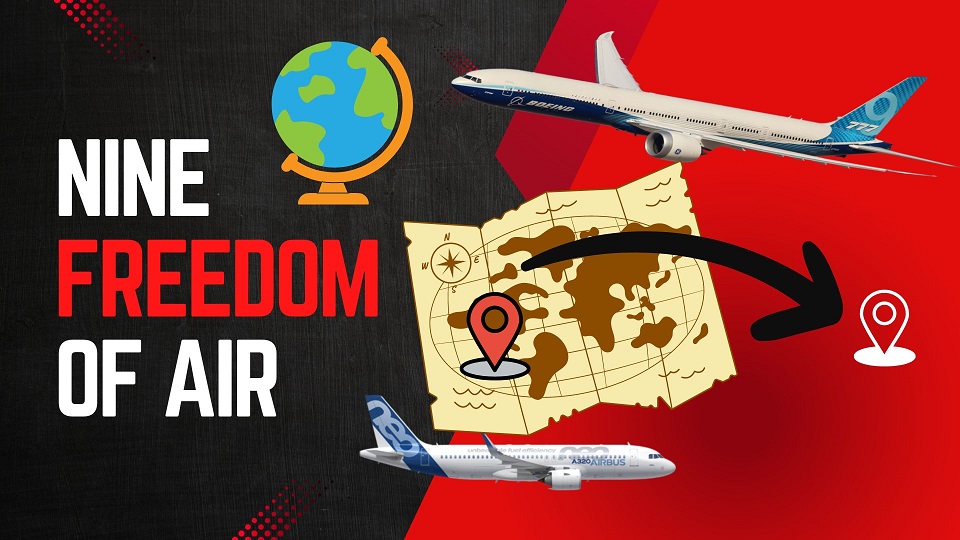
Most of us travel from one city to another city via road we need to get permission to that specific city if it is in another country like a visa or Road access permission to use its property for revenue purposes to carry passengers and Cargo. Similarly, In the airline Industry, it is also important that the Company have permission to fly and access that country whether it’s for stoppage flying above them, or Operating the passengers within that country This is called Freedom of the Air.
Some countries together they agree with certain conditions to access their Aerospace for to access for the airline to travel above their nation. If the bilateral is done for Their own countries’ airlines or other countries’ airlines. In this chapter, we understand how this thing is carried out. What all the condition has to look into that.
The Freedoms of the Air are international commercial aviation agreements (traffic rights) that grant a country’s airline(s) the privilege to enter and land in another country’s airspace. They were formulated in 1944 at an international gathering held in Chicago (known as the Chicago Convention) to establish uniformity in world air commerce. There are generally considered to be nine freedoms of the air.
Most nations of the world exchange first and second freedoms through the International Air Services Transit Agreement. The other freedoms,chase freedom airline miles when available, are usually established between countries in bilateral or multilateral air services agreements. The third and fourth freedoms are always granted together. The eighth and ninth freedoms (cabotage) have been exchanged only in limited instances
First Freedom:
The basic permission granted to an airline from one country (A) to fly through the airspace of another country (B)
Second Freedom:
The permission for a commercial airplane from country (A) to land and refuel (often called a technical stop) in another country (B).
Third Freedom :
The privilege for an airline to transport paying (Revenue) passengers from its home country (A) to another country (B).
Fourth Freedom
The rights for an airline to transport paying (Revenue )passengers from another country (B) to the airline’s home country (A).
Fifth Freedom
Fifth Freedom (also known as beyond rights): The rights for an airline to transport passengers from its home country (A) to a destination (B), then pick up and carry passengers to other international destinations (C).
Sixth Freedom:
Sixth Freedom (Combination of Third & Fourth Freedoms) The right for an airline to carry passengers or cargo between two foreign countries (B and C), provided the aircraft touches down in the airline’s home country (A).
Seventh Freedom:
The authorization for an airline to operate flights that start in a foreign country (B), skip its home country (A), and transport passengers to another international destination (C).
Eighth Freedom Air
The rights for an airline to transport passengers from one location within a country’s territory (B) to another point within the same country on a flight originating in the airline’s home country (A). This right is commonly referred to as cabotage and is notably scarce outside of Europe.
Ninth Freedom Air
The entitlement for an airline from a specific country (A) to begin a flight in a foreign country (B) and transport passengers from one location to another within that foreign country. This concept, also referred to as stand-alone cabotage, distinguishes itself from the traditional aviation definition of cabotage by not directly involving the airline’s home country.
Aviation
Air India’s B747 Makes Its Final Journey, Waving Farewell to Fans

In a poignant moment marking the end of an era in aviation history, Air India’s iconic Boeing 747 aircraft, affectionately known as the ‘Queen of the Skies,’ embarked on its ultimate journey from Mumbai’s international airport.
The departure, bound for Plainfield, USA, where it will undergo dismantling and part-stripping under the ownership of American AerSale, signals the closure of a storied chapter for the airline.
Once revered for transporting dignitaries ranging from prime ministers to presidents, the Boeing 747 has etched itself into aviation lore. Yet, as airlines worldwide pivot towards more contemporary and cost-effective aircraft, Air India’s decision to bid farewell to its remaining Boeing 747s reflects the pragmatic realities of today’s aviation landscape.
The sale of these majestic planes to AerSale represents a strategic move by Tata Group, Air India’s new custodian, towards optimizing operational efficiency and embracing modern industry standards. Out of the four aircraft sold, two will be repurposed into freighters, while the remaining pair will be meticulously disassembled to salvage valuable components.
The final flight from Mumbai witnessed a touching tribute as pilots performed a traditional ‘Wing Wave,’ symbolizing the conclusion of the Boeing 747‘s distinguished service with Air India. This poignant gesture encapsulates the deep sentiment attached to the aircraft’s departure and its significant contribution to the airline’s legacy.
As the Boeing 747 embarks on its journey to Plainfield, USA, nostalgia permeates the air, evoking memories of its maiden flight on March 22, 1971. Over five decades, Air India operated a total of 25 Boeing 747s, each leaving an indelible mark on the annals of aviation history.

